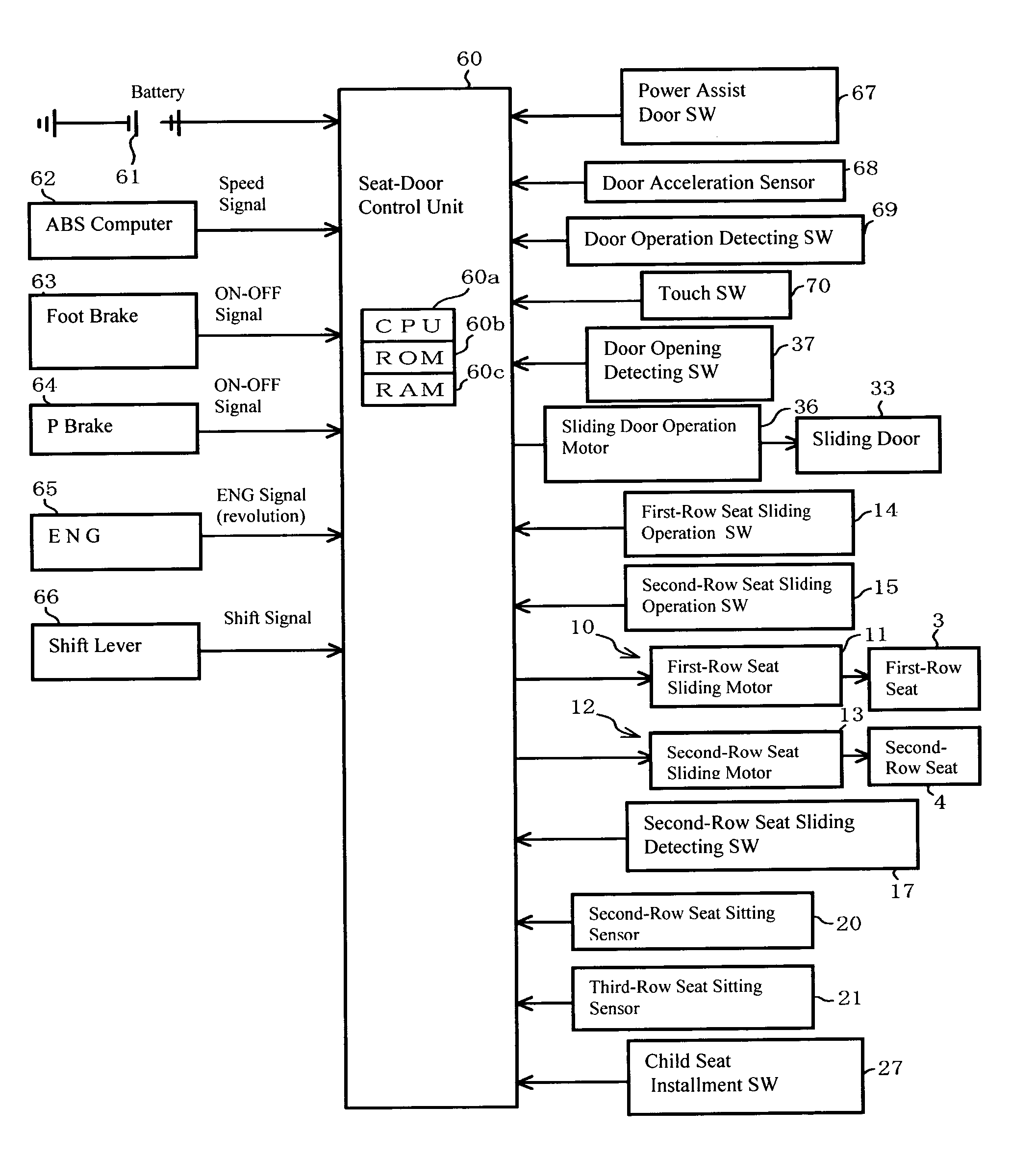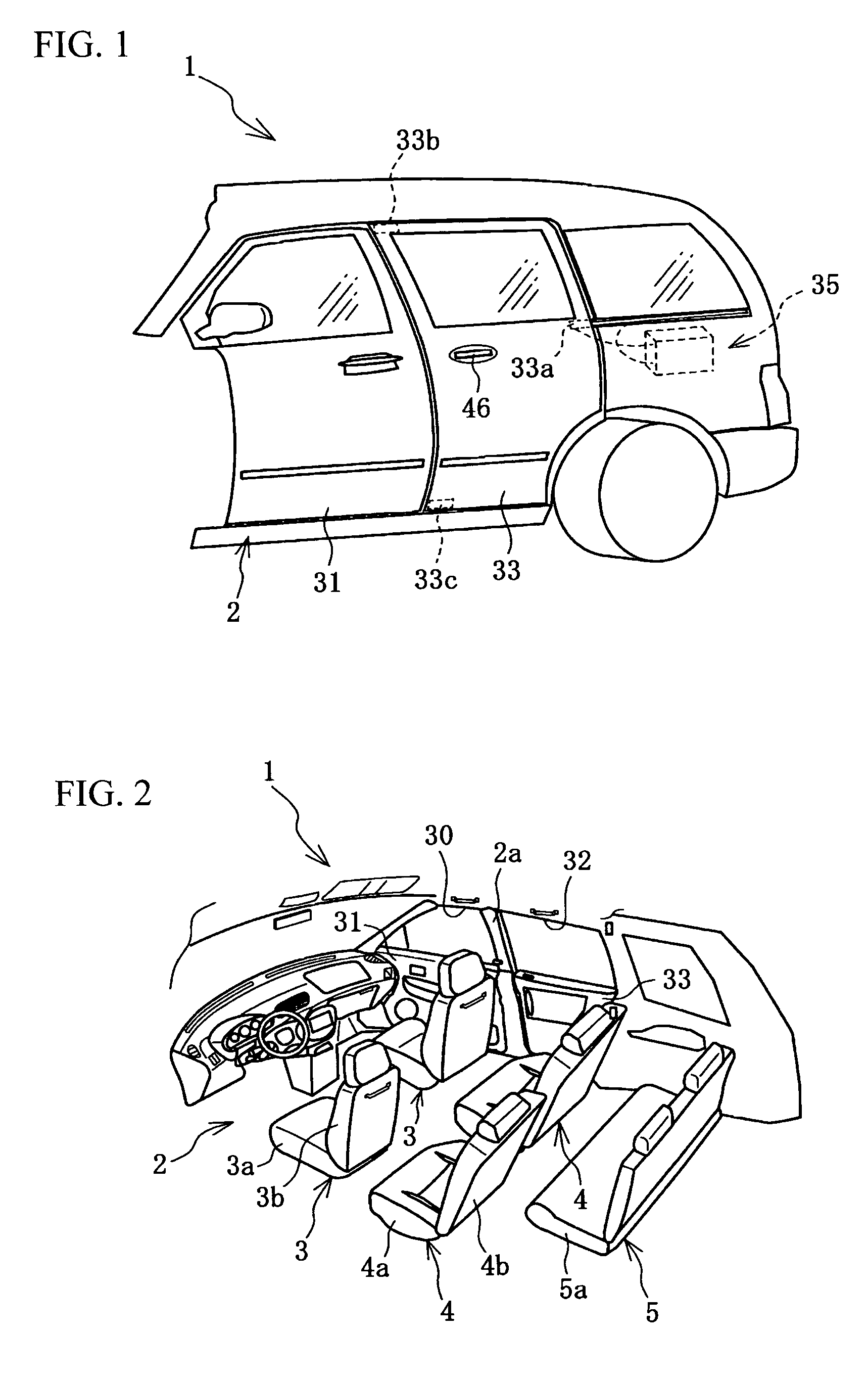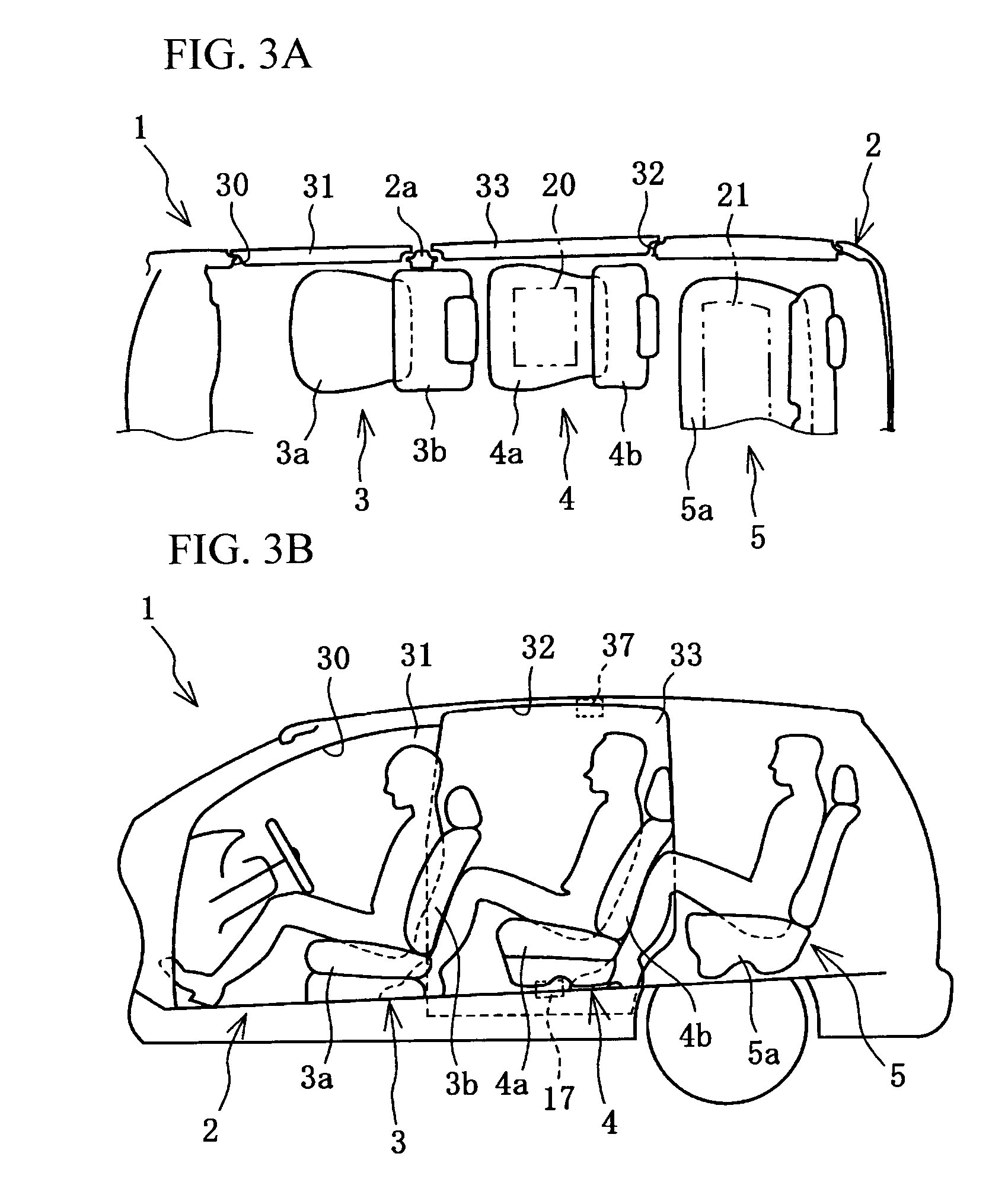Seat control device for vehicle
a technology for controlling devices and seats, applied in the direction of electric devices, movable seats, transportation and packaging, etc., can solve the problems of deteriorating accessibility difficult to have access to the third-row seat through the second-row opening, and long time-consuming access to the third-row seat, so as to reduce the necessary time and improve the operation.
- Summary
- Abstract
- Description
- Claims
- Application Information
AI Technical Summary
Benefits of technology
Problems solved by technology
Method used
Image
Examples
embodiment 1
Alternative Embodiment 1
[0111]Instead of the flow char of FIG. 13, the flow chart of FIG. 14 (Si (i=10, 11, 12 - - - ) denotes each step) is applicable. As shown in FIG. 14, starting condition of the control is the same as that in the flow chart of FIG. 13, and when the control starts and the full-open mode is selected (Yes in S10), firstly the sliding door 33 is driven backward to open fully (S11). Next, when the passenger does not sit on the third-row seat 5 (Yes in S12); the passenger does not sit on the second-row seat 4 (Yes in S13); and the child seat 26 is not installed on the second-row seat 4 (Yes in S14), the second-row seat 4 starts sliding forward (S15).
[0112]Even if the full-open mode is selected (Yes in S10), sliding forward of the second-row seat 4 is prohibited (S16) when the passenger sits on the third-row seat 5 (No in S12); the passenger sits on the second-row seat 4 (No in S13); and the child seat 26 is installed on the second-row seat 4 (No in S14). Further, whe...
embodiment 2
Alternative Embodiment 2
[0113]The sliding door 33 may be operated manually, omitting the door driving mechanism 35, and also the opening instruction operations 40, 45, 50, 55 may be omitted. In this case, the door opening detecting switch 37 for detecting the opening of the sliding door 33 is applied as the second-seat ingress prediction means. This control is executed by the flow chart (Si (i=20, 21, 22 - - - ) denotes each step) of FIG. 15. While the engine is ON, this control starts when the vehicle speed is at 0 km / h; the foot brake is ON or the parking brake is ON or the sift position is at parking range. On the other hand, while the engine is OFF, this control starts when a voltage of the battery 61 is equal to or more than a predetermined value. When the control starts and the sliding door 33 is opened (Yes in S20), it is determined based on the signal from the door opening detecting switch 37 whether the opening degree of the sliding door 33 is greater than the certain first...
embodiment 3
Alternative Embodiment 3
[0117]As shown in FIG. 16, the embodiment of the present invention may be configured such that a front step position detecting switch 85 is provided below a front scuff plate 80, which is a lower step located below the second-row ingress and egress opening 32, and a rear step position detecting switch 86 is provided below a rear scuff plate 81, which is a lower step located below the second-row ingress and egress opening 32, and a step position of the passenger is detected based on signals from the position detecting switches 85, 86. These step position detecting switches 85, 86 correspond to riding position detecting means for detecting ingress position of the passenger at the ingress and egress opening, and the ingress position detecting means is included by the above ingress position detecting means.
[0118]A piezoelectric element 88 that is disposed between a step base 82 and the respective scuff plates 80, 81 so that both faces thereof can contact them may...
PUM
 Login to View More
Login to View More Abstract
Description
Claims
Application Information
 Login to View More
Login to View More - R&D
- Intellectual Property
- Life Sciences
- Materials
- Tech Scout
- Unparalleled Data Quality
- Higher Quality Content
- 60% Fewer Hallucinations
Browse by: Latest US Patents, China's latest patents, Technical Efficacy Thesaurus, Application Domain, Technology Topic, Popular Technical Reports.
© 2025 PatSnap. All rights reserved.Legal|Privacy policy|Modern Slavery Act Transparency Statement|Sitemap|About US| Contact US: help@patsnap.com



